Nasa Webb
- All
- News
- Videos
- Web Stories
-

NASA Unveils New Space Sounds From Black Holes Using Sonification
- Tuesday May 13, 2025
- World News | Edited by NDTV News Desk
With the help of the Chandra X-ray Observatory, the James Webb Space Telescope, and the Imaging X-ray Polarimetry Explorer (IXPE), the US space agency presented three new space sounds.
-
 www.ndtv.com
www.ndtv.com
-

"100 Times Brighter": NASA's Webb Telescope Captures New Details Of Auroras On Jupiter
- Tuesday May 13, 2025
- Science | Edited by NDTV News Desk
NASA's James Webb Space Telescope (JWST) has captured stunning images of dancing lights, called auroras, on Jupiter. Similar to the Northern Lights we see on Earth.
-
 www.ndtv.com
www.ndtv.com
-

NASA James Webb Space Telescope Discovers Farthest Spiral Galaxy, Reveals Clues About Galactic Evolution
- Saturday April 19, 2025
- Written by Gadgets 360 Staff
JWST discovers Zhúlóng, the earliest Milky Way-like galaxy, 800 million years after the Big Bang explosion occurred.
-
 www.gadgets360.com
www.gadgets360.com
-

Signs of Alien Life Detected on Nearby Exoplanet Using NASA’s James Webb Space Telescope
- Friday April 18, 2025
- Written by Gadgets 360 Staff
Astronomers have detected possible biosignature gases, including dimethyl sulfide (DMS), in the atmosphere of exoplanet K2-18b using NASA’s James Webb Space Telescope. Located in the habitable zone, this “Hycean” world may host a vast ocean and a hydrogen-rich atmosphere, raising intriguing possibilities about alien life. Further research is ...
-
 www.gadgets360.com
www.gadgets360.com
-

Signs Of A Supermassive Black Hole Hiding In Nearby Spiral Galaxy
- Friday April 18, 2025
- World News | Edited by NDTV News Desk
Webb witnessed a highly ionised gas whose level of energy was too high to come from something like supernovae, making scientists believe the presence of a supermassive black hole.
-
 www.ndtv.com
www.ndtv.com
-

NASA’s Hubble Space Telescope Shares Detailed Mosaic of the Sombrero Galaxy
- Friday April 18, 2025
- Written by Gadgets 360 Staff
NASA’s Hubble reveals a detailed view of the Galactic favourite, the Sombrero Galaxy, telling about the rare shape of the galaxy. The Sombrero Galaxy is found to have metal-rich stars in its outer region. This research has a future scope of getting deeper insights into its formation by using the advanced imaging technique of Hubble.
-
 www.gadgets360.com
www.gadgets360.com
-

NASA’s James Webb Space Telescope Reveals the Complex Structure of a Planetary Nebula
- Wednesday April 16, 2025
- Written by Gadgets 360 Staff
NASA's James Webb Space Telescope has unveiled the complex character of NGC 1514, a planetary nebula developing over at least 4,000 years. Only seen in infrared light, the nebula's rings now resemble "fuzzy" clusters set in twisted patterns. A network of sharper holes near the centre stars indicates where faster material punched through.
-
 www.gadgets360.com
www.gadgets360.com
-

NASA's Webb Telescope Releases Clearest Pictures Of Dying Stars
- Wednesday April 16, 2025
- World News | Edited by NDTV News Desk
NASA has released some stunning images of dying stars, offering the most in-depth view of the planetary nebula NGC 1514 to date.
-
 www.ndtv.com
www.ndtv.com
-

JWST Captures Unseen Details of Exoplanets in HR 8799 and 51 Eridani Systems
- Thursday April 3, 2025
- Written by Gadgets 360 Staff
The James Webb Space Telescope (JWST) has captured groundbreaking images of exoplanets in the HR 8799 and 51 Eridani systems. By modifying its coronagraphs, astronomers allowed more starlight to pass through, revealing clearer planetary details. The study, published in The Astrophysical Journal Letters, highlights the first successful detection of ...
-
 www.gadgets360.com
www.gadgets360.com
-

Two New Exoplanets Found Orbiting a Star in Draco Constellation
- Wednesday April 2, 2025
- Written by Gadgets 360 Staff
Astronomers have identified two exoplanets, TOI-1453 b and TOI-1453 c, orbiting a star 250 light-years away in Draco. The planets, a super-Earth and a sub-Neptune, were detected using NASA’s TESS satellite and the HARPS-N spectrograph. TOI-1453 b is a rocky planet orbiting close to its star, while TOI-1453 c is twice Earth’s size and may have a...
-
 www.gadgets360.com
www.gadgets360.com
-

James Webb Telescope Captures Neptune’s Auroras in Stunning Detail
- Monday March 31, 2025
- Written by Gadgets 360 Staff
The James Webb Space Telescope has provided the first-ever direct images of Neptune’s auroras, revealing surprising details about the ice giant’s atmosphere. Unlike auroras on Earth, Jupiter, or Saturn, Neptune’s auroras appear across unexpected locations due to its tilted and offset magnetic field. Scientists also detected the presence of H...
-
 www.gadgets360.com
www.gadgets360.com
-

NASA's Webb Captures First Direct Images Of Carbon Dioxide Outside Solar System
- Tuesday March 18, 2025
- Science | Edited by Ritu Singh
This finding provides compelling evidence that the giant planets in HR 8799 formed through core accretion, a process similar to the formation of Jupiter and Saturn.
-
 www.ndtv.com
www.ndtv.com
-

JWST Identifies Cooling Gas in Phoenix Cluster, Unlocking Star Formation Process
- Thursday February 20, 2025
- Written by Gadgets 360 Staff
The James Webb Space Telescope has detected the missing cooling gas in the Phoenix Cluster, a galaxy cluster located 5.8 billion light-years away. Researchers used the Mid-Infrared Instrument (MIRI) to identify gas at around 540,000 degrees Fahrenheit trapped in cavities within the cluster. This discovery resolves a long-standing mystery of how sta...
-
 www.gadgets360.com
www.gadgets360.com
-

James Webb Space Telescope Captures Sagittarius A Emitting Continuous Flares in Milky Way’s Core
- Thursday February 20, 2025
- Written by Gadgets 360 Staff
The James Webb Space Telescope has captured Sagittarius A*, the Milky Way’s supermassive black hole, emitting flares continuously. These bursts, varying in intensity and duration, have been observed over multiple sessions. Scientists believe the activity may be linked to magnetic interactions within the accretion disk. The phenomenon appears rand...
-
 www.gadgets360.com
www.gadgets360.com
-

Asteroid 2024 YR4 Has a 2.3 Percent Chance of Hitting Earth in 2032, Says NASA
- Tuesday February 18, 2025
- Written by Gadgets 360 Staff
Asteroid 2024 YR4, measuring 180 feet wide, has a 2.3% chance of impacting Earth on 22 December 2032, according to scientists. A smaller 0.3% risk of the asteroid colliding with the moon has also been noted. While the Earth impact could release energy equal to 8 megatons of TNT, a moon strike may create a visible crater. Researchers are using the J...
-
 www.gadgets360.com
www.gadgets360.com
-

NASA Unveils New Space Sounds From Black Holes Using Sonification
- Tuesday May 13, 2025
- World News | Edited by NDTV News Desk
With the help of the Chandra X-ray Observatory, the James Webb Space Telescope, and the Imaging X-ray Polarimetry Explorer (IXPE), the US space agency presented three new space sounds.
-
 www.ndtv.com
www.ndtv.com
-

"100 Times Brighter": NASA's Webb Telescope Captures New Details Of Auroras On Jupiter
- Tuesday May 13, 2025
- Science | Edited by NDTV News Desk
NASA's James Webb Space Telescope (JWST) has captured stunning images of dancing lights, called auroras, on Jupiter. Similar to the Northern Lights we see on Earth.
-
 www.ndtv.com
www.ndtv.com
-

NASA James Webb Space Telescope Discovers Farthest Spiral Galaxy, Reveals Clues About Galactic Evolution
- Saturday April 19, 2025
- Written by Gadgets 360 Staff
JWST discovers Zhúlóng, the earliest Milky Way-like galaxy, 800 million years after the Big Bang explosion occurred.
-
 www.gadgets360.com
www.gadgets360.com
-

Signs of Alien Life Detected on Nearby Exoplanet Using NASA’s James Webb Space Telescope
- Friday April 18, 2025
- Written by Gadgets 360 Staff
Astronomers have detected possible biosignature gases, including dimethyl sulfide (DMS), in the atmosphere of exoplanet K2-18b using NASA’s James Webb Space Telescope. Located in the habitable zone, this “Hycean” world may host a vast ocean and a hydrogen-rich atmosphere, raising intriguing possibilities about alien life. Further research is ...
-
 www.gadgets360.com
www.gadgets360.com
-

Signs Of A Supermassive Black Hole Hiding In Nearby Spiral Galaxy
- Friday April 18, 2025
- World News | Edited by NDTV News Desk
Webb witnessed a highly ionised gas whose level of energy was too high to come from something like supernovae, making scientists believe the presence of a supermassive black hole.
-
 www.ndtv.com
www.ndtv.com
-

NASA’s Hubble Space Telescope Shares Detailed Mosaic of the Sombrero Galaxy
- Friday April 18, 2025
- Written by Gadgets 360 Staff
NASA’s Hubble reveals a detailed view of the Galactic favourite, the Sombrero Galaxy, telling about the rare shape of the galaxy. The Sombrero Galaxy is found to have metal-rich stars in its outer region. This research has a future scope of getting deeper insights into its formation by using the advanced imaging technique of Hubble.
-
 www.gadgets360.com
www.gadgets360.com
-

NASA’s James Webb Space Telescope Reveals the Complex Structure of a Planetary Nebula
- Wednesday April 16, 2025
- Written by Gadgets 360 Staff
NASA's James Webb Space Telescope has unveiled the complex character of NGC 1514, a planetary nebula developing over at least 4,000 years. Only seen in infrared light, the nebula's rings now resemble "fuzzy" clusters set in twisted patterns. A network of sharper holes near the centre stars indicates where faster material punched through.
-
 www.gadgets360.com
www.gadgets360.com
-

NASA's Webb Telescope Releases Clearest Pictures Of Dying Stars
- Wednesday April 16, 2025
- World News | Edited by NDTV News Desk
NASA has released some stunning images of dying stars, offering the most in-depth view of the planetary nebula NGC 1514 to date.
-
 www.ndtv.com
www.ndtv.com
-

JWST Captures Unseen Details of Exoplanets in HR 8799 and 51 Eridani Systems
- Thursday April 3, 2025
- Written by Gadgets 360 Staff
The James Webb Space Telescope (JWST) has captured groundbreaking images of exoplanets in the HR 8799 and 51 Eridani systems. By modifying its coronagraphs, astronomers allowed more starlight to pass through, revealing clearer planetary details. The study, published in The Astrophysical Journal Letters, highlights the first successful detection of ...
-
 www.gadgets360.com
www.gadgets360.com
-

Two New Exoplanets Found Orbiting a Star in Draco Constellation
- Wednesday April 2, 2025
- Written by Gadgets 360 Staff
Astronomers have identified two exoplanets, TOI-1453 b and TOI-1453 c, orbiting a star 250 light-years away in Draco. The planets, a super-Earth and a sub-Neptune, were detected using NASA’s TESS satellite and the HARPS-N spectrograph. TOI-1453 b is a rocky planet orbiting close to its star, while TOI-1453 c is twice Earth’s size and may have a...
-
 www.gadgets360.com
www.gadgets360.com
-

James Webb Telescope Captures Neptune’s Auroras in Stunning Detail
- Monday March 31, 2025
- Written by Gadgets 360 Staff
The James Webb Space Telescope has provided the first-ever direct images of Neptune’s auroras, revealing surprising details about the ice giant’s atmosphere. Unlike auroras on Earth, Jupiter, or Saturn, Neptune’s auroras appear across unexpected locations due to its tilted and offset magnetic field. Scientists also detected the presence of H...
-
 www.gadgets360.com
www.gadgets360.com
-

NASA's Webb Captures First Direct Images Of Carbon Dioxide Outside Solar System
- Tuesday March 18, 2025
- Science | Edited by Ritu Singh
This finding provides compelling evidence that the giant planets in HR 8799 formed through core accretion, a process similar to the formation of Jupiter and Saturn.
-
 www.ndtv.com
www.ndtv.com
-

JWST Identifies Cooling Gas in Phoenix Cluster, Unlocking Star Formation Process
- Thursday February 20, 2025
- Written by Gadgets 360 Staff
The James Webb Space Telescope has detected the missing cooling gas in the Phoenix Cluster, a galaxy cluster located 5.8 billion light-years away. Researchers used the Mid-Infrared Instrument (MIRI) to identify gas at around 540,000 degrees Fahrenheit trapped in cavities within the cluster. This discovery resolves a long-standing mystery of how sta...
-
 www.gadgets360.com
www.gadgets360.com
-

James Webb Space Telescope Captures Sagittarius A Emitting Continuous Flares in Milky Way’s Core
- Thursday February 20, 2025
- Written by Gadgets 360 Staff
The James Webb Space Telescope has captured Sagittarius A*, the Milky Way’s supermassive black hole, emitting flares continuously. These bursts, varying in intensity and duration, have been observed over multiple sessions. Scientists believe the activity may be linked to magnetic interactions within the accretion disk. The phenomenon appears rand...
-
 www.gadgets360.com
www.gadgets360.com
-

Asteroid 2024 YR4 Has a 2.3 Percent Chance of Hitting Earth in 2032, Says NASA
- Tuesday February 18, 2025
- Written by Gadgets 360 Staff
Asteroid 2024 YR4, measuring 180 feet wide, has a 2.3% chance of impacting Earth on 22 December 2032, according to scientists. A smaller 0.3% risk of the asteroid colliding with the moon has also been noted. While the Earth impact could release energy equal to 8 megatons of TNT, a moon strike may create a visible crater. Researchers are using the J...
-
 www.gadgets360.com
www.gadgets360.com

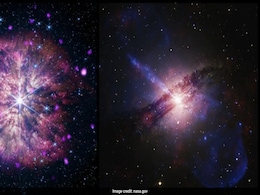
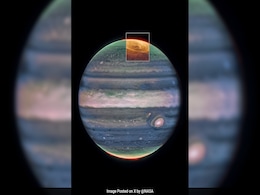
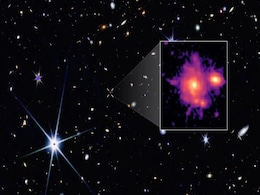

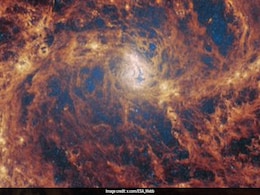

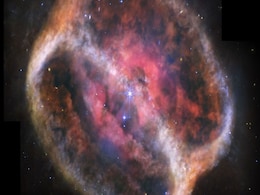


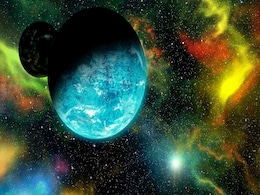


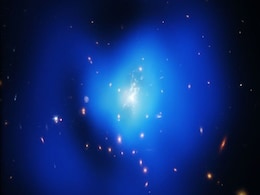
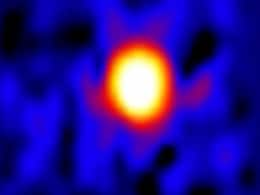
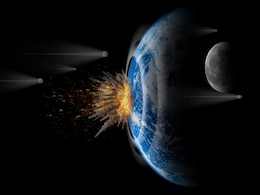
![Gadgets 360 With Technical Guruji: Did You Know? [April 6, 2024] Gadgets 360 With Technical Guruji: Did You Know? [April 6, 2024]](https://c.ndtvimg.com/2024-02/mpconh58_did-you-know_640x480_10_February_24.jpg?downsize=245:163)







